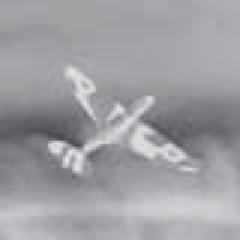Image Processing Reference
In-Depth Information
problems in regions that lack intensity variation (texture). This is because the minimisation
function in Equation 4.72 is almost flat and there is no clear evidence of the motion. In
general, there is no effective way of handling these problems since they are due to the lack
of information in the image.
(a) First image
(b) Second image
(c) Window size 3
(d) Window size 5
(c) Window size 11
Figure 4.37
Example of area-based motion computation
4.7.2 Differential approach
Another popular way to estimate motion focuses on the observation of the differential
changes in the pixel values. There are actually many ways of calculating the optical flow
by this approach (Nagel, 1987; Barron, 1994). We shall discuss one of the more popular
techniques (Horn, 1981). We start by considering the intensity relationship in Equation
4.71. According to this, the brightness at the point in the
new
position should be the same
as the brightness at the
old
position. Like Equation 4.5, we can expand
P
(
t
+ δ
t
)
x
+δ
y
by
x
,
y
+δ
using a Taylor series as
x
t
x
P
()
P
()
t
y
P
()
t
xy
,
xy
,
xy
,
P
( +
t
t
)
=
P
( )
t
+
+
y
+
t
+
xxyy
+,
+
xy
,
t
(4.75)
where
contains higher order terms. If we take the limit as
t
0 then we can ignore
as it also tends to zero which leaves
x
t
x
P
()
P
()
t
y
P
()
t
xy
,
xy
,
xy
,
P
( +
t
t
)
=
P
( )
t
+
+
y
+
t
(4.76)
xy
,
xxyy
+,
+
t















































































































































